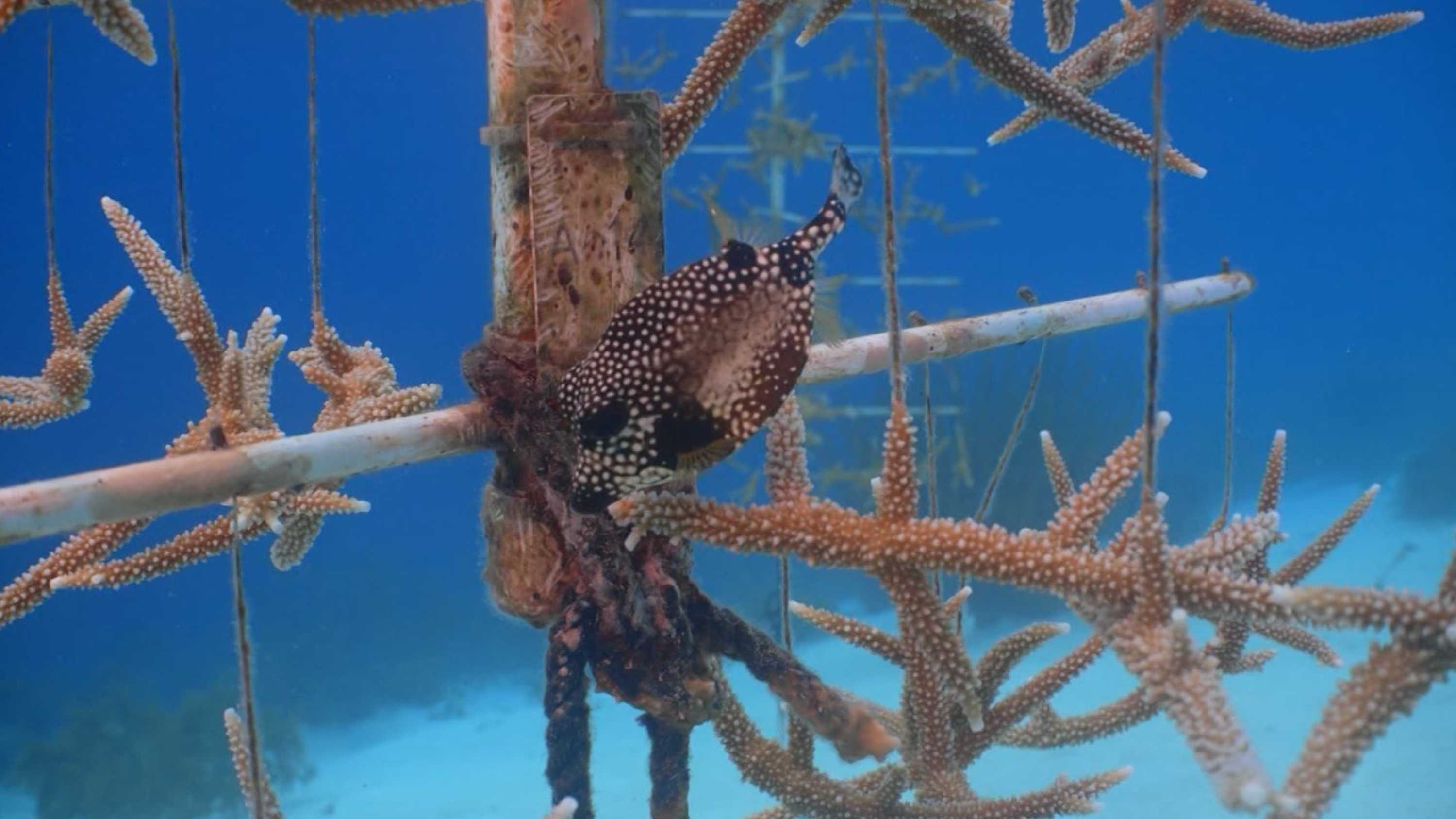(CNN Spanish) — A nursery in the depths of the Caribbean Sea: This is the commitment of the Reef Renewable Bonaire system to grow coral reefs that are home to more than 350 species of fish on the Dutch island of Bonaire, off the coast of Venezuela.
For the past 10 years, this local organization has been implementing a natural recovery process known as coral reef fragmentation in the southern Caribbean. “We grow thousands of corals in our nursery and cut them like a garden in water. For example, let’s say there’s a coral, which we call a mother colony. You can cut a piece, and that piece is done. It heals and then it starts to heal.” The new corals will be clones of the mother colony,” Francesca Virtis, director of operations at Reef Renewable Bonaire, told CNN. Through this practice, she says, they have succeeded in producing and planting 10,000 corals a year on the island’s reefs.
Much of the restoration has focused on two types of branching corals: elkhorn and staghorn, which are vulnerable and important refuges for marine life on the reef. “When the project started, we collected samples of almost 50 strains of these species. We need to find corals that are more resistant. They are more resilient,” Virtis says.
An underwater nursery in Bonaire allows for the production of about 10,000 corals per year. (Credit: CNN)
Coral reefs are victims of climate change
Work to protect these coral reefs is important: a recent study, which took place over four years and ended in 2020, found that coral reefs are bleaching 61%, a phenomenon that is showing signs of critical stress for these species.
Behind this phenomenon is climate change.
“Obviously, one of the effects of climate change is that the oceans are warming. What we’ve seen in Bonaire over the last few years is a lot of bleaching, but fortunately not a lot of corals die. But of course, if these extreme bleaching conditions continue and the corals don’t have time to recover, the appearance of the reefs changes completely,” said Roxanne- Liana Francisca from the STINARA Bonaire organization explains to CNN.
(On Australia’s Great Barrier Reef, for example, there have been six mass bleaching events since 2016, as CNN previously reported.)
The island in the Caribbean Sea has had decades of protection, which has allowed progress in its maintenance. In 1979, the waters around the island were given special protection, making it one of the first marine reserves on the planet. Since then, the reserve’s fishing ban and its anchor and coral removal ban have been regularly monitored by the Stanhope a Park Trust.
One of the tasks they carry out there is to measure the water temperature, which, according to the biologist, will help “in the future, in a targeted way, if there is a plan to restore coral species that live best at certain temperatures.”
Coral reefs are among the many affected by climate change. (Credit: CNN)
Results-based trust
“It’s very comforting to see how you can maintain a coral reef that you’ve grown from small pieces for a few years, first in a nursery and then planting and monitoring for years. One difference,” Virtis says of his Bonaire experience.
Today, the island’s reefs maintain their status as some of the healthiest in the Caribbean. The professionals who work there are optimistic about the future, as Francisca says: “We have to decide what our future looks like, and then we have to take steps to ensure that we can protect that future. I think that in 20 years’ time we will ensure that Bonaire will be one of the few places with beautiful reefs. We’re at a point where we can make those decisions.”



:quality(85)/cloudfront-us-east-1.images.arcpublishing.com/infobae/DYRQWUXU2VHMHNIVOD22JCU2KU.jpg)
:quality(85)/cloudfront-us-east-1.images.arcpublishing.com/infobae/HVMMKV4KMVDNVJD5W5F7GK4AHY.jpg)
